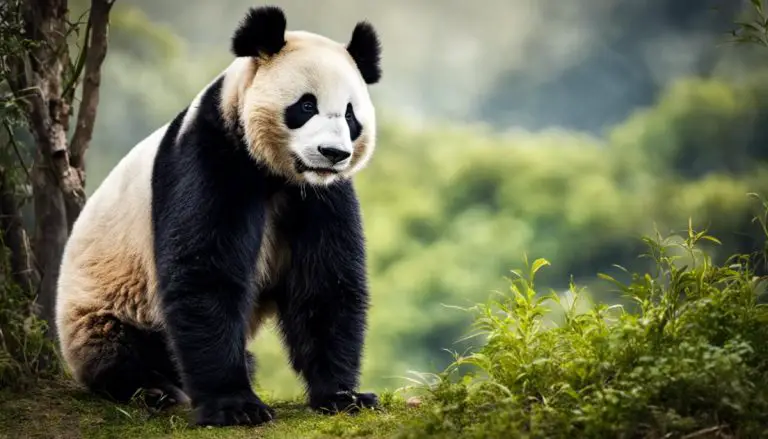As fascinating symbols of peace and diplomatic amity, giant pandas play a pivotal role in promoting global unity. A beacon of hope in conservation, their numbers, however, have seen significant fluctuation over the past few decades. This discussion explores the current count of the world’s panda populations, reasons for their declining numbers, and finally, the various strategies implemented for their conservation. Drawing upon data from reputable sources such as the World Wildlife Fund, this discourse provides an in-depth look at these themes, painting a comprehensive picture of the plight that pandas face in the modern era.
Current Count of Panda Populations
Current Count of Panda Populations
As of the latest count, there are approximately 1,864 giant pandas alive in the wild, according to the World Wildlife Fund (WWF) and the Chinese government. This figure marks a significant increase from the past few decades, when the wild panda population was estimated to be around 1,000. The rise in numbers is largely due to successful conservation efforts that have expanded and improved the species’ natural habitat. Nevertheless, pandas remain a vulnerable species on the International Union for Conservation of Nature’s (IUCN) Red List.
Where Pandas Currently Reside
The majority of the existing panda population can be found residing in the southwestern parts of China, particularly in the Sichuan, Shaanxi, and Gansu provinces. Their preferred habitats are the secluded, elevated regions teeming with dense bamboo forests, bamboo being their main food source. Moreover, there are approximately 600 pandas housed in various zoos and breeding centers globally, with the majority situated in China. These conservation efforts range from breeding, reintroduction, and “panda diplomacy” programs, with the common goal of increasing both the numbers and geographical dispersion of the species.

Reasons for Declining Panda Populations
The Impact of Habitat Loss on Pandas
Habitat loss, primarily resulting from human activities such as deforestation and infrastructure development, has emerged as a leading factor contributing to the decreasing number of pandas. With the rapid industrialization of China, the natural home of pandas has suffered significantly resulting in smaller, fragmented pockets of their environment. This fragmentation has inadvertently affected the pandas’ ability to move freely and participate in natural mating habits, a critical factor influencing their genetic diversity and population growth. Furthermore, pandas isolated in these fragments are exposed to a greater risk of local extinction due to possibilities of diseases or natural calamities.
Poaching and Climate Change: Compounding Threats to Panda Survival
Wild panda populations face additional danger from poaching, despite measures taken by the Chinese government to deter illegal hunting. High demand for panda hides in the black market continues this illicit trade, posing a significant threat to their existence. Alongside poaching, climate change also introduces destabilizing influences on panda survival. As global temperatures continue to rise, the availability of bamboo, their primary source of nourishment, decreases. This has a direct effect on pandas’ ability to sustain and reproduce. Extreme weather conditions such as heavy rainfall or frost can cause further devastation to bamboo forests, exacerbating the challenges to the pandas’ survival.

Efforts and Strategies for Panda Conservation
Global and Local Efforts: A United Front for Panda Preservation
Progress has been observed over the years due to collective global efforts for panda preservation. A landmark initiative saw the creation of protected nature reserves within China, with their count escalating from a mere 13 in 1998 to an impressive 67 by 2018. These reserves now serve as a haven for roughly two-thirds of the wild panda population. The significant expansion in protected areas has minimized human interference and has played a key role in the steady growth of panda populations. Furthermore, partnerships between organizations such as the World Wildlife Fund (WWF) and national governments and researchers have been established to monitor panda habitats. Such comprehensive surveillance ensures that conservation efforts are making a difference and that panda populations are recovering—with the number of pandas surpassing 1,800 by 2015.
Successful Strategies and Future Plans for Panda Protection
Success in panda conservation has been largely due to an integrated approach that involves not just the creation of protected areas, but also habitat restoration, local community engagement, and public education. The Chinese government’s policy of banning logging, implementing forest conservation projects, and providing economic alternatives to communities have all played an instrumental role in increasing panda numbers. Going forward, a key part of the strategy is to continue expanding the nature reserves and creating ‘green corridors’ to connect isolated panda populations. Scientists are also running programs to captively breed pandas with the hope of releasing them into the wild to bolster their populations.
These concerted efforts are firmly rooted in the understanding of panda’s role in the biodiversity-rich forests. They perform a crucial role in spreading seeds and facilitating growth of vegetation. Maintaining and increasing their population, estimated to be 1,864 adults and 600 juveniles, and preserving their habitats in turn benefits myriad species and contributes to the health of the ecosystems.

Giant pandas might be thriving better than before, but the fight to keep their populations steady is far from over. The combined threats of habitat loss, poaching, and climate change pose a formidable challenge that calls for sustained and effective conservation methods. From global policies to local interventions, preservation efforts are the heart of ensuring the survival of pandas. Hence, it is everyone’s responsibility – governments, organizations, and individuals – to help in the conservation of these incredible creatures, our living icons of peace and unity.





